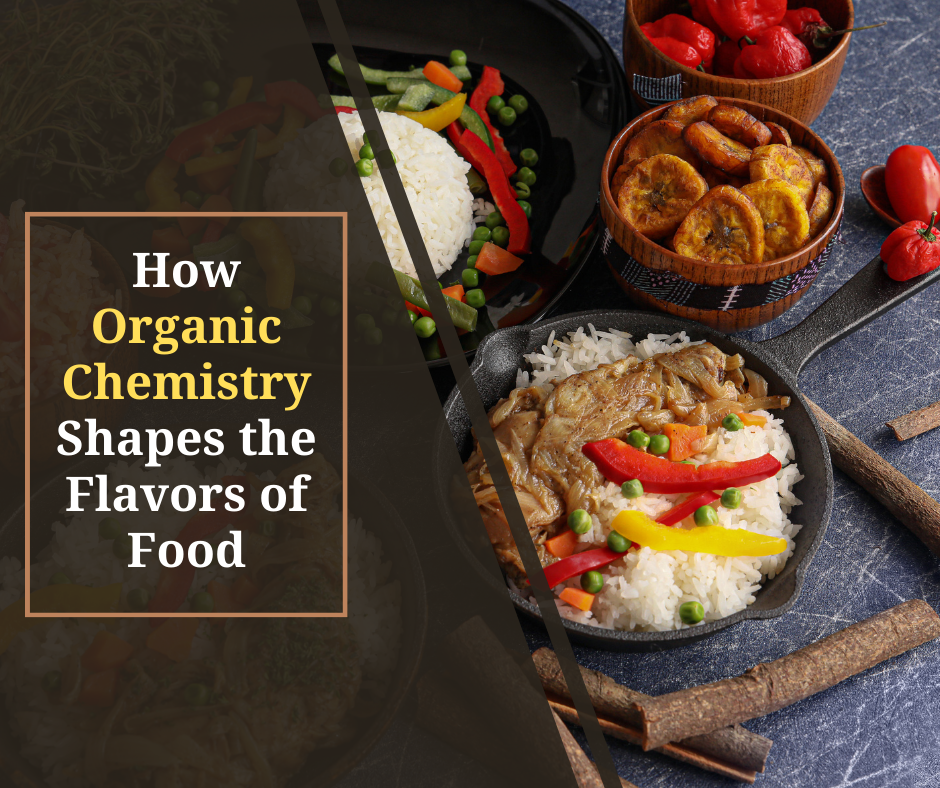Too Many Requests from Your Network
Please complete verification to access this content.
How Organic Chemistry Shapes the Flavors of Food
Flavours are the most crucial thing in food, and they make it more than just fuel for our bodies. The refreshing zing of mint or the delightful taste of a ripe strawberry can make anyone’s day. But have you ever wondered what creates these incredible flavours? The answer could lie in organic chemistry. Organic chemistry is a fascinating branch of science that sheds light on the molecules behind the tastes and aromas we like. In this guide, we will learn how organic chemistry shapes the flavours of your favourite foods.
What is Organic Chemistry?
Organic chemistry involves the study of carbon-based compounds. It explains how molecules made of carbon, hydrogen, oxygen and other elements form complex substances. Organic compounds are the core behind many of the flavours and smells associated with food. These molecules interact with our taste buds and olfactory receptors to create unique sensory experiences.
How Molecules contribute to the creation of flavors
Flavours are the combination of two factors: taste and aroma. While taste comes from your tongue detecting sweet, sour, salty, bitter, and umami, the aroma comes from volatile organic compounds (VOCs) that travel to your nose.
For Example
Esters are responsible for fruity flavours, such as the banana-like aroma of isoamyl acetate.
Natural vs. Artificial Flavors
When you buy a packaged foods you might have noticed labels like “natural flavor” or “artificial flavors” Both types are derived from organic chemistry but differ in their sources.
Natural Flavors are supported by real plants, fruits or animals. For example the vanilla flavored ice cream get its flavor from vanilla beans.
Artificial flavours are modified and synthesized in a lab. They replicate natural flavours using chemical reactions. For example, a synthetic compound, namely ethyl vanillin, is often used as a cheaper and more potent alternative to natural vanilla.
No doubt, artificial flavors are designed to be same to their natural counterparts at a molecular level but organic chemists ensure its safety and consistency for consumption.
Cooking and Flavor Chemistry
The process of transforming raw ingredients into flavorful dishes is known as cooking, and it is a form of chemistry. New flavours are released when heat triggers the chemical reactions. One such reaction is the Maillard reaction, which occurs when proteins and sugars in food are heated together. We can take another example of caramelization, where sugar breaks down under heat to create rich and sweet flavours. Organic compounds like furanone and pyrazines form during these processes, adding depth and complexity to the taste.
Preserving and Enhancing Flavors
Organic chemistry also plays a crucial role in preserving and enhancing flavours. Antioxidants such as ascorbic acid (vitamin C) prevent oxidation, which can spoil food and alter its taste. Identically, emulsifiers such as lecithin ensure smooth mixtures in sauces and dressings by stabilizing oil and water.
Flavor enhancers such as monosodium glutamate (MSG), are the savory taste found in mushrooms, cheese, and soy sauce. These compounds work by interacting with specific taste receptors on the tongue.
Future Flavors – The Role of Organic Chemistry
As sustainability will be in highly demanded in future sustainable food options will be come into existence. organic chemistry is paving the way for plant-based and lab-grown alternatives.in addition, organic chemistry play a pivotal role in eliminating food waste. By understanding the molecular changes that cause spoilage, scientists develop better packaging and preservation techniques to keep food fresh for longer.
Conclusion
At last, we can conclude that the flavors of your favorite foods are not just randomly occurs it is the result of intricate organic chemistry at work. From the natural compounds in fruits and spices to the artificial flavours in candies and snacks, chemistry creates the sensory experiences that make eating so enjoyable.



